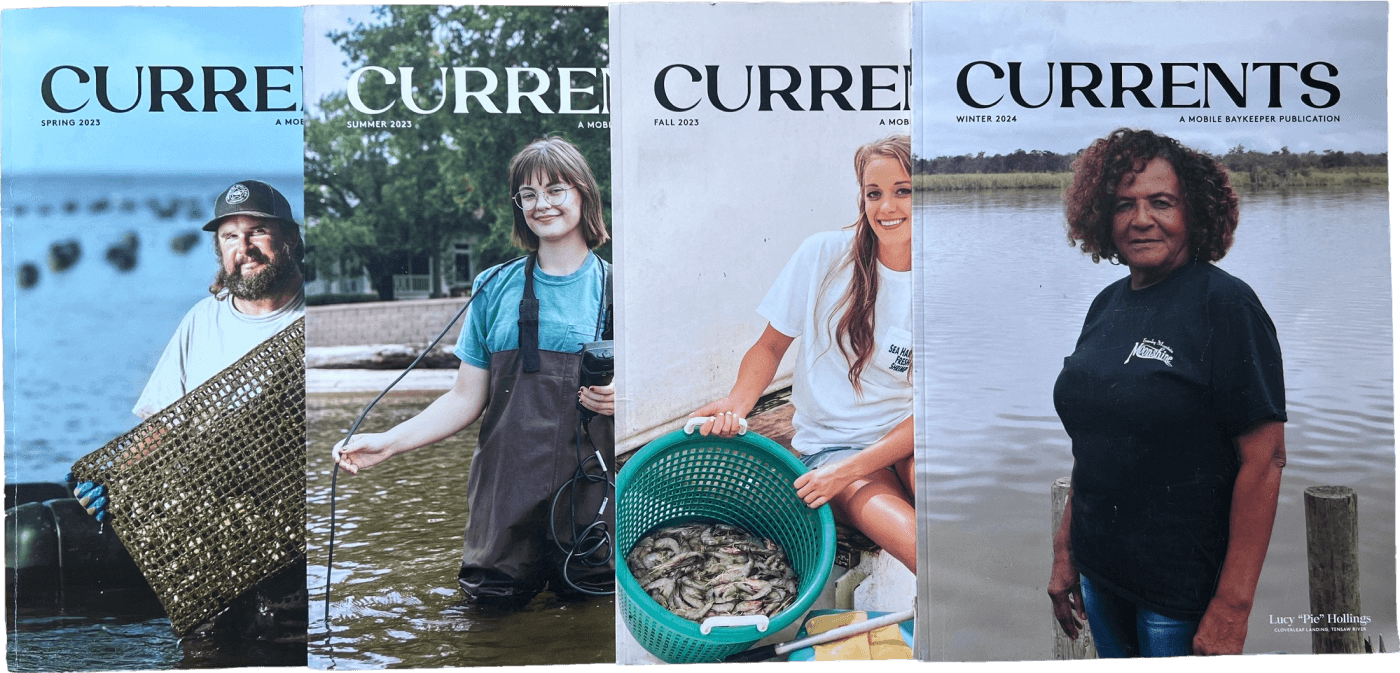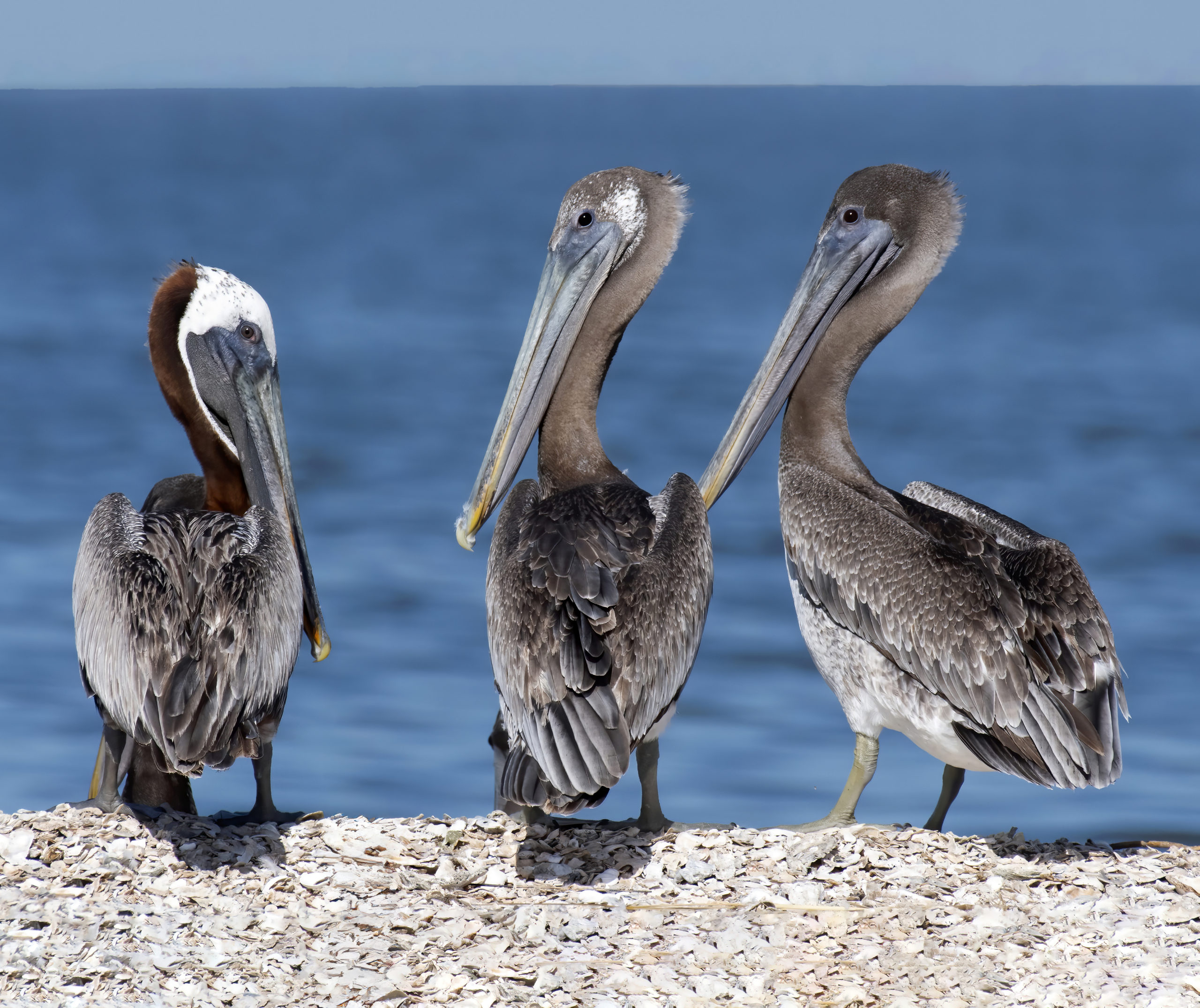
This article is from the summer 2024 edition of Mobile Baykeeper’s print quarterly, CURRENTS. The magazine is mailed to active members who have given more than $50 in the past year. To get on the magazine’s mailing list, donate here.
by Susan Rouillier
If you look southward from Mobile Bay’s western bank, a faint verdant streak appears above dense air — a sight like a mirage, yet real. This is Gaillard Island, a marvel crafted by man, a sanctuary that rescued a species.
As Brown Pelicans gracefully glide over Mobile Bay, their presence is reminiscent of ancient pterosaurs etched in a blueprint 40 million years old. But this sight was nearly lost. Dr. Wilson Gaillard’s foresight spared them from certain extinction and rescued one of nature’s ancient wonders.
Who was Wilson Gaillard?
Wilson Gaillard grew up surrounded by nature, residing with his family on a 5-acre tract nestled in the heart of Springhill. He conscientiously preserved the land in its pristine state, providing a sanctuary for birds and various wildlife species. Recounting childhood memories, his nephew Frye Gaillard fondly recalls his Uncle Wilson’s unusual pet raccoon, which enjoyed a daily treat of Coca-Cola that it drank straight from the bottle. Frye also recalls an extraordinary incident where Wilson, unfazed, stood motionless in the waters of Little Lagoon at Gulf Shores, as a snake gracefully approached to feast from his fish stringer. When questioned about his lack of alarm, Wilson simply remarked, “This is their home, too.”
Life-long Nature Lover
In 1968, Gaillard authored the book Moving the Earth, For a Song, which chronicled the Audubon Society’s successful campaign to protect egrets and herons from the plundering of their plumes for fashionable headwear. This campaign impressed upon him our responsibility to help reverse the decline of bird and wildlife populations, primarily due to habitat destruction and, occasionally, overhunting. Notably, he credited hunters for their significant role in habitat preservation, recognizing them as key stewards of these crucial ecosystems. He also found inspiration in tales of Native Americans living in harmony with nature, preserving habitats, and hunting only what was necessary. Through these accounts, he gained a profound understanding of the vital importance of creating and protecting habitats.

What Happened to the Pelicans?
During the Depression era, birds faced dual threats: they were hunted for both feathers and food. In Depression-era Alabama, pelicans were killed and sold as food. People would nail a mullet to a board, put it in the water, and wait for a pelican to dive onto it, breaking its neck on the board.
Additionally, the widespread use of DDT worsened their plight by causing the pelicans’ eggshells to become dangerously thin. This fragility resulted in the eggs being crushed when parents attempted to incubate them.
The pelican population in Mobile Bay suffered particularly severe consequences, with the nearby Ciba-Geigy Corporation (now BASF) in McIntosh, Alabama beginning production of DDT in the 1950s. This was one of the nation’s largest DDT factories, flushing significant amounts of the chemical into surrounding rivers and swamps. Many decades later, the Ciba Superfund site remains contaminated, necessitating ongoing cleanup efforts. DDT residue today is still found in the eggshells of pelicans, reaching concentrations just below the threshold at which eggshell failure takes place.
An Island in Mobile Bay
In the 1970s, there were problems regarding the proposed Theodore Ship Channel. The Army Corps of Engineers announced it would scoop up 30 million cubic yards of dredge spoil when it carved the channel to connect Mobile Bay to Theodore Industrial Park, where a Navy port had been built. The question of where to put so much dirt was the main problem. Then Gaillard presented his simple notion: let’s make an island in the Bay, he proposed. He was pretty sure the birds would like it.
Wilson’s vision for a bird sanctuary required meticulous construction. To ensure the island’s stability, the Corps of Engineers conducted tests in 1978 in an effort to prevent the island’s erosion into the Bay, employing a triangular design and floating tire breakwaters.
The construction posed unprecedented challenges. After years of testing and analysis, the dredge material was loaded onto a 200-foot spill barge and then hydraulically offloaded onto the island. Cordgrass and trees were strategically planted to establish a robust root system, essential for the island’s long-term integrity. This pioneering technique, thoroughly researched and proven effective, has since been adopted nationwide. The island was completed in 1979.
The meticulous construction of the island bird sanctuary laid the foundation for observing the unique behaviors of its inhabitants, particularly the distinctive hunting techniques and captivating life cycle of the Brown Pelicans.
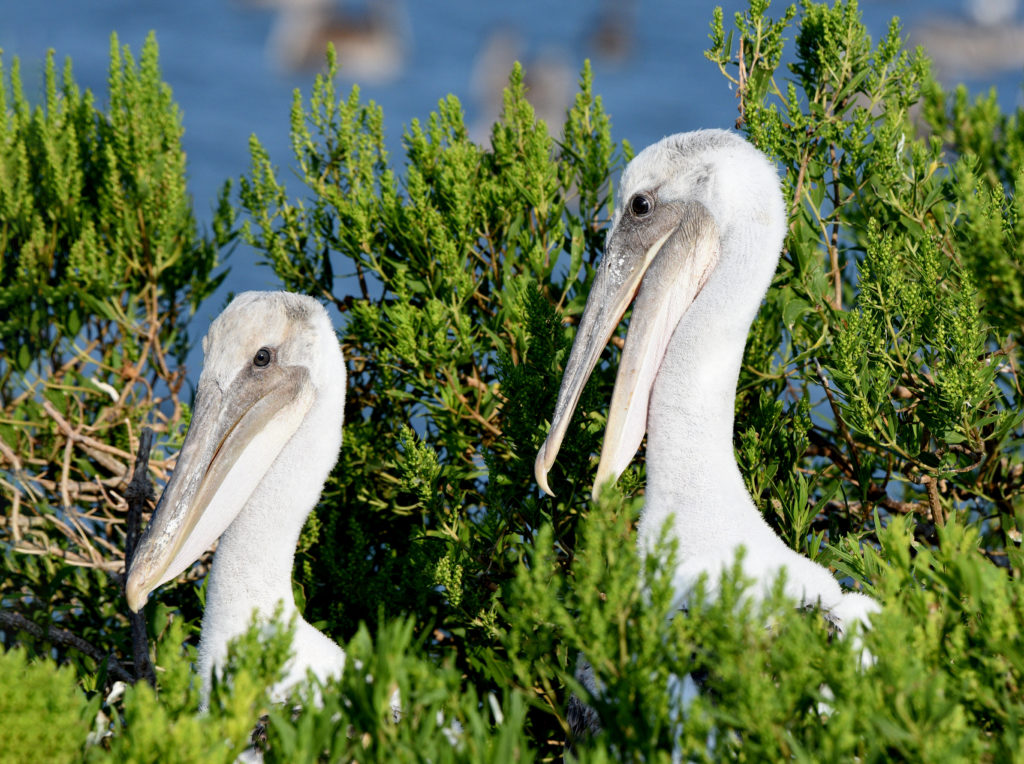
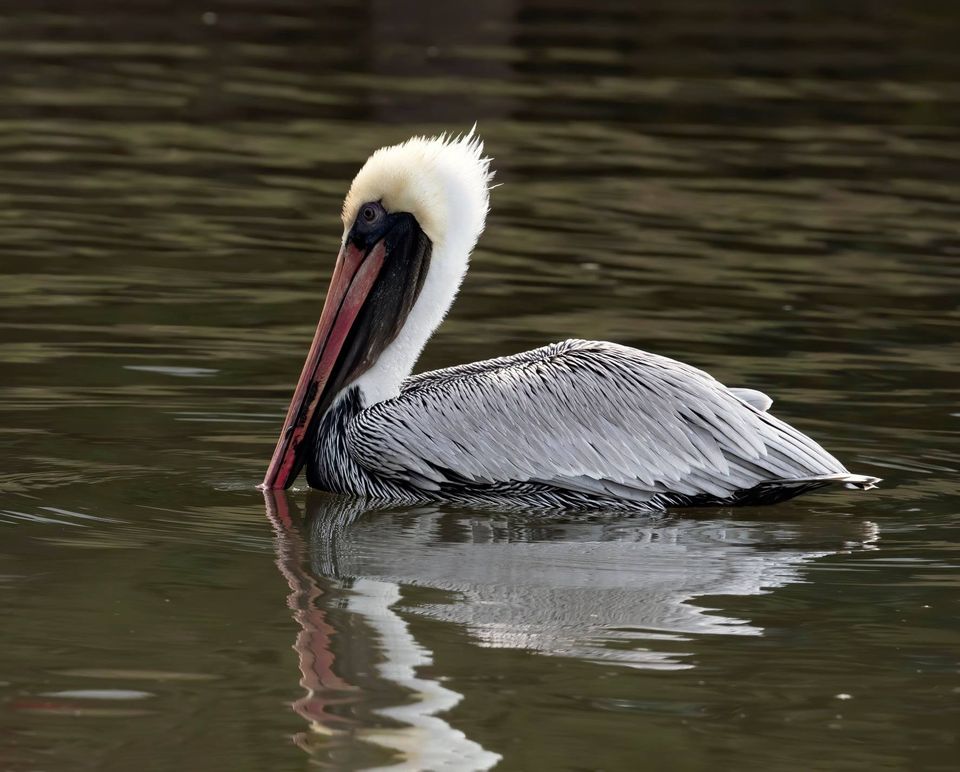

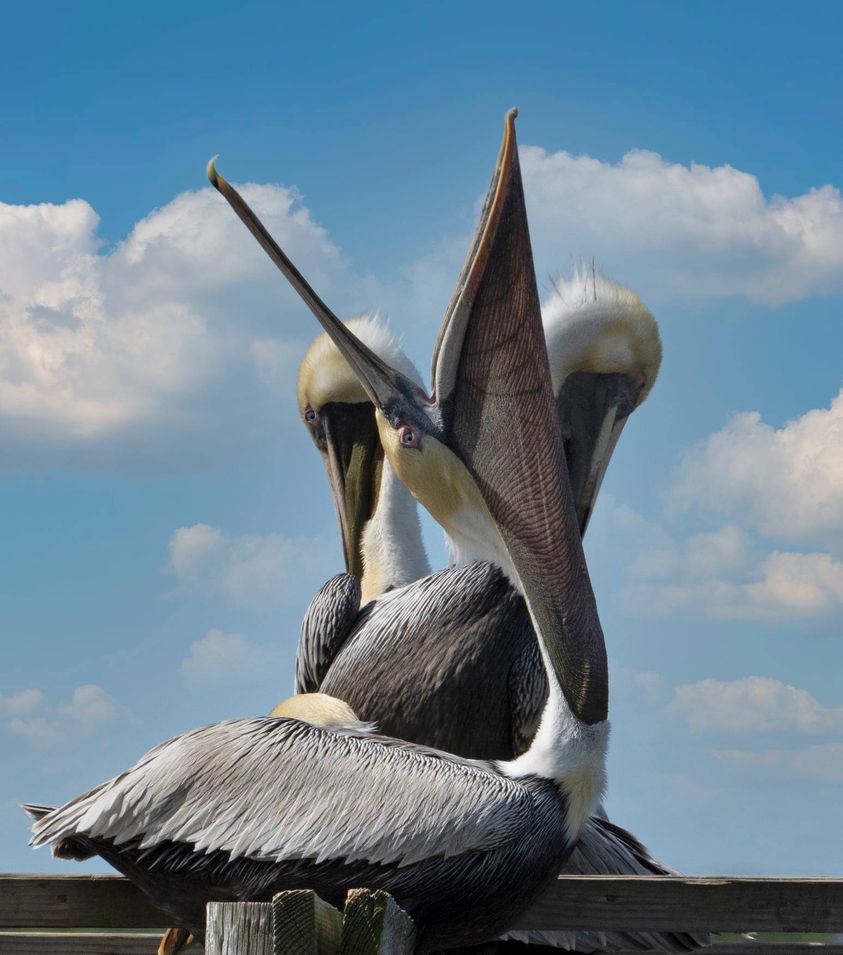
Uniqueness of the Brown Pelican
During fishing expeditions, the Brown Pelican showcases its unique hunting style, ascending as high as 100 feet before executing a dramatic plunge into the sea. This species stands alone among pelicans in its ability for spectacular dives. Just before the moment of impact with the water, the pelican deftly rotates its head a quarter turn, perhaps to enhance its accuracy.
The plumage and eye color of Brown Pelicans undergo multiple transformations depending on their age and the season. Juvenile Brown Pelicans undergo six molts before reaching maturity, which typically takes three to five years. During this developmental journey, they sport a gray-brown upper body, blackish-brown belly, and striped black-and-silver undersides. Post-breeding, their heads take on a light-yellow hue while their necks become white. Initially brown-eyed, young pelicans’ eyes transition to tan or blue as they mature.
When it comes to breeding, Brown Pelicans seek out predator-free environments, often nesting on secluded islands. Gaillard Island might have an occasional alligator or nutria, but a few alligators will not significantly damage the birds, and nutria are herbivores.
The Brown Pelicans don’t acquire their adult plumage until they reach three years of age. Remarkably, if relocated by scientists, Brown Pelicans have shown an incredible homing instinct, returning to their birthplace within three years. While they can start reproducing at two years old, they typically wait until they are three or four.
Although pelicans are among the largest flying birds, they possess the ability to soar continuously for up to 24 hours, covering a distance of 300 miles. Their distinctive pouch is used like a fishing net and not usually used for storing fish, as many believe.
Both male and female pelicans collaborate in nest construction, egg incubation, nest defense, feeding, and teaching their offspring to fly. Parents take turns guarding the nest until the young reach four to six weeks old. Initially, hatchlings rely on their parents for warmth, and to bring them regurgitated fish. By about three months old, they become proficient flyers and begin to feed themselves. In the wild, Brown Pelicans can live up to 43 years. Brown Pelicans of Alabama were recorded as endangered in 1970 and, largely because of the success of Gaillard Island, removed from the list in 2009.
The Success of Gaillard Island
From a mere four Brown Pelicans nesting in 1983, the island now boasts more than 10,000 nests. Gaillard Island, now the Gulf Coast’s largest rookery, is not just for Pelicans.
Today, tens of thousands of birds, encompassing various species such as skimmers, terns, pelicans, egrets, herons, ibis and stilts, rely on Gaillard Island as a vital habitat. It also serves as the sole nesting site in Alabama for Caspian terns, Sandwich terns, Royal terns, and Laughing gulls, likely supporting more than 75 percent of coastal Alabama’s shorebird population.
Isolated from predators and fortified against waves with encircling rocks, the island provides an ideal sanctuary for birds, despite its inhospitality to humans due to swarming bugs and the overwhelming stench of thousands of birds casting droppings all day. It is a bird’s paradise.
We owe heartfelt gratitude to Gaillard for his visionary efforts that not only rescued the Brown Pelican, but also enriched our understanding and appreciation of the natural world.
Photo credit: Pelican images by Susan Rouillier. Willson Gaillard image from “Moving the Earth, For a Song” with permission of family.
Susan Rouillier has lived and worked in Japan, Australia, and the U.S. She is the author of the popular “South Mobile 1699-2018,” a history of Mobile’s Western Shore region, available on Amazon. You can find her work on Instagram, Facebook, and at Susierou.com.
